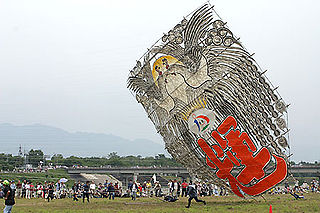
A kite is a tethered heavier-than-air or lighter-than-air craft with wing surfaces that react against the air to create lift and drag forces. A kite consists of wings, tethers and anchors. Kites often have a bridle and tail to guide the face of the kite so the wind can lift it. Some kite designs do not need a bridle; box kites can have a single attachment point. A kite may have fixed or moving anchors that can balance the kite. The name is derived from the kite, the hovering bird of prey.

Makar(a) Sankranti, also referred to as Uttarayana, Makar, or simply Sankranti, is a Hindu observance and a festival. Usually falling on the date of 14 January annually, this occasion marks the transition of the sun from the zodiac of Sagittarius (dhanu) to Capricorn (makara). Since the sun has made this transition which vaguely coincides with moving from south to north, the festival is dedicated to the solar deity, Surya, and is observed to mark a new beginning. Many native multi-day festivals are organised on this occasion all over India.

The Kite Runner is the first novel by Afghan-American author Khaled Hosseini. Published in 2003 by Riverhead Books, it tells the story of Amir, a young boy from the Wazir Akbar Khan district of Kabul. The story is set against a backdrop of tumultuous events, from the fall of Afghanistan's monarchy through the Soviet invasion, the exodus of refugees to Pakistan and the United States, and the rise of the Taliban regime.
In computer science, a ternary search tree is a type of trie where nodes are arranged in a manner similar to a binary search tree, but with up to three children rather than the binary tree's limit of two. Like other prefix trees, a ternary search tree can be used as an associative map structure with the ability for incremental string search. However, ternary search trees are more space efficient compared to standard prefix trees, at the cost of speed. Common applications for ternary search trees include spell-checking and auto-completion.
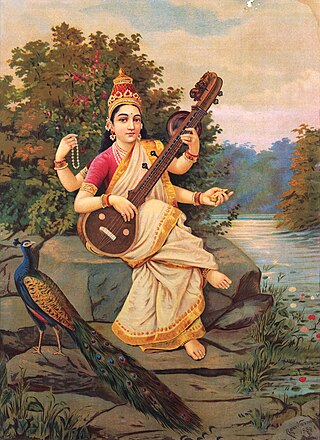
Vasant Panchami, also rendered Vasanta Panchami and Saraswati Puja in honour of the Hindu goddess Saraswati, is a festival that marks the preparation for the arrival of spring. The festival is celebrated in Indian religions in different ways depending on the region. Vasant Panchami also marks the start of preparation for Holika and Holi, which take place forty days later. The Vasant Utsava (festival) on Panchami is celebrated forty days before spring, because any season's transition period is 40 days, and after that, the season comes into full bloom.
Manja is an abrasive string used to fly fighter kites, mainly in South Asian countries. Made when a cotton string is coated with powdered glass or a similar abrasive. In Chile it is called hilo curado.

Kite Man is a supervillain appearing in comic books published by DC Comics who uses kite-based weapons to commit crimes. He is commonly depicted as an adversary of Batman. His name is an homage to Peanuts protagonist Charlie Brown, due to the latter character commonly being shown flying kites into trees. The character has been generally regarded as a joke in comparison with other supervillains, due to his dimwitted personality and laughable gimmick. However, with his appearance in the DC Rebirth arc "The War of Jokes and Riddles", Kite Man gained a reputation as a cult favorite character among fans, due to his tragic backstory, persistence and motivation to become a better villain, and his catchphrase "Kite Man, hell yeah!".

The Kite Runner is a 2007 American drama film directed by Marc Forster from a screenplay by David Benioff and based on the 2003 novel of the same name by Khaled Hosseini. It tells the story of Amir (Ebrahimi) a well-to-do boy from the Wazir Akbar Khan district of Kabul who is tormented by the guilt of abandoning his friend Hassan (Mahmoodzada). The story is set against a backdrop of tumultuous events, from the fall of the monarchy in Afghanistan through the Soviet military intervention, the mass exodus of Afghan refugees to Pakistan and the United States, and the Taliban regime.

Fighter kites are kites used for the sport of kite fighting. Traditionally, most are small, unstable single-line flat kites where line tension alone is used for control, at least part of which is manja, typically glass-coated cotton strands, to cut down the line of others.

In kiting, a line is the string or thin cord made of cotton, nylon, silk, or wire, which connects the kite to the person operating it or an anchor. Kites have a set of wings, a set of anchors, and a set of lines coupling the wings with the anchors. Kite lines perform various roles: bridle, control, tug, or special duty.
Kite mooring refers to a specific method used to secure a kite in flight. The two fundamental parts of a kite are the wing and the kite line. The kite must be moored to a mobile or fixed object to develop tension in the kite line which converts to lift and drag, enabling the kite to fly.
Lahore, being the richest cultural city in Pakistan, celebrates a number of festivals throughout the year. It is known for the festivals of Basant and Mela Chiraghan, but many others are celebrated in the metropolis as well.
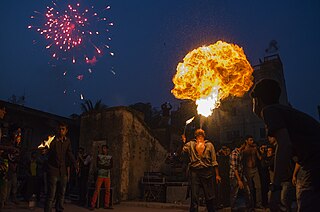
Shakrain Festival is an annual Bengali celebration in Dhaka, Bangladesh, observed with the flying of kites. The celebration is uniquely celebrated by the Bengali Muslim Dhakaiya community based on Old Dhaka. It occurs at the end of Poush, the ninth month of the Bengali calendar. The festival coincides with the holiday of Poush Sankranti This day is known as Poush Sankranti.

Vasanta, also referred to as Basant, refers to the Indian spring.

Every year, Gujarat celebrates more than 200 festivals. The International Kite Festival (Uttarayan) is one of the biggest festivals celebrated. Months beforehand, homes in Gujarat begin to manufacture special box kites for the festival.
Basant is a spring time kite flying event during the Basant Panchami festival in the Punjab. According to the Punjabi calendar it is held on the fifth day of lunar month of Magha marking the start of spring.
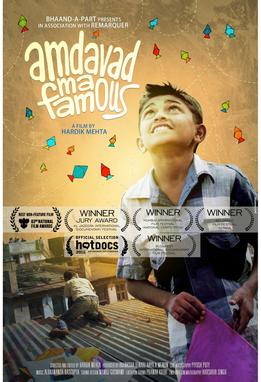
Amdavad Ma Famous is a documentary film about kite flying festival in Ahmedabad, India. The film is directed by Hardik Mehta and produced by Akanksha Tewari and Arya A. Menon. It was filmed with help of cinematographer Piyush Puty and Harshbir Singh. The film received the National Film Award for Best Non-Feature Film at 63rd National Film Awards for 2015.
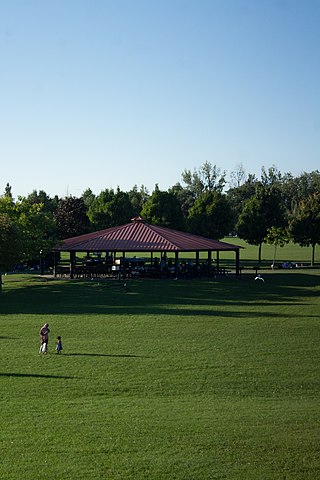
Milliken District Park is a park located in the Scarborough area of Toronto, Ontario, Canada.
The Jivdaya Charitable Trust (JCT), headquartered at Ahmedabad in the Indian state of Gujarat, is a not for profit, non-governmental organisation which provides free medical care to unowned domestic animals and also runs a rehabilitation centre for wild birds and small mammals. Its main objective is to nurture injured animals back to health. It is located in the city centre.














